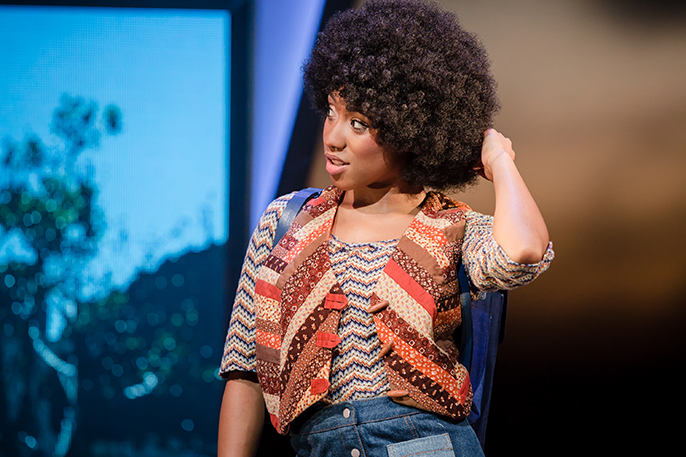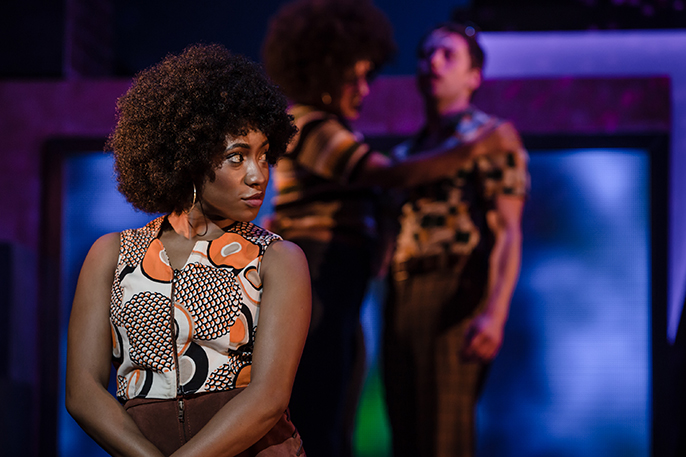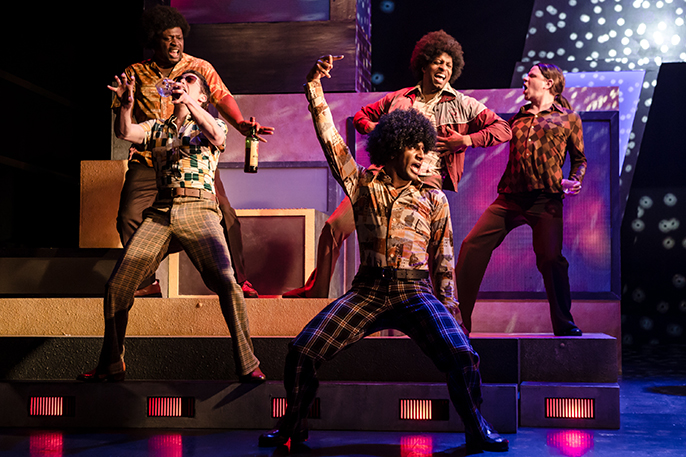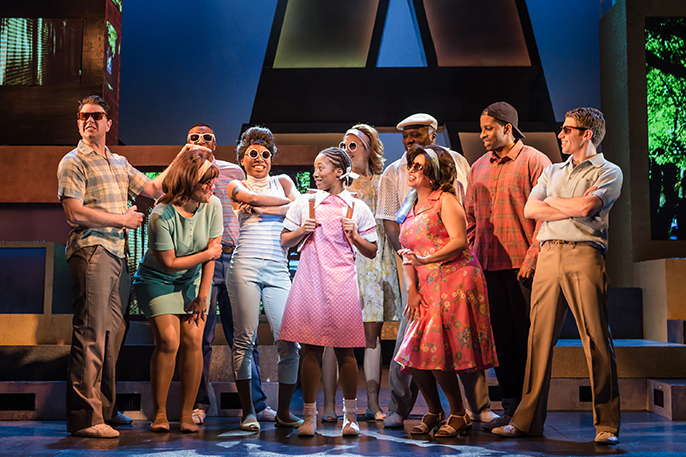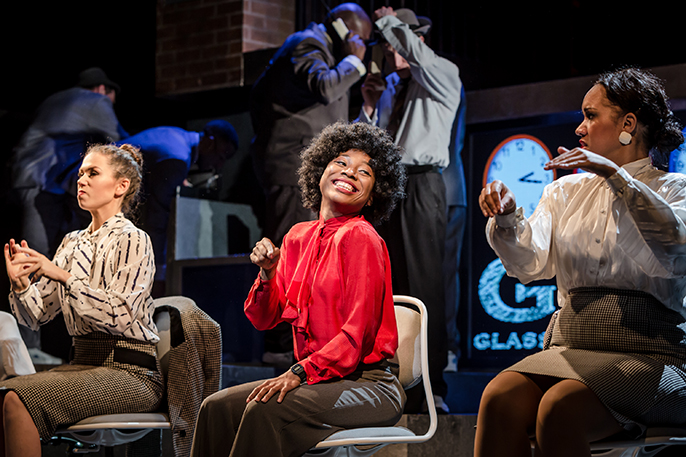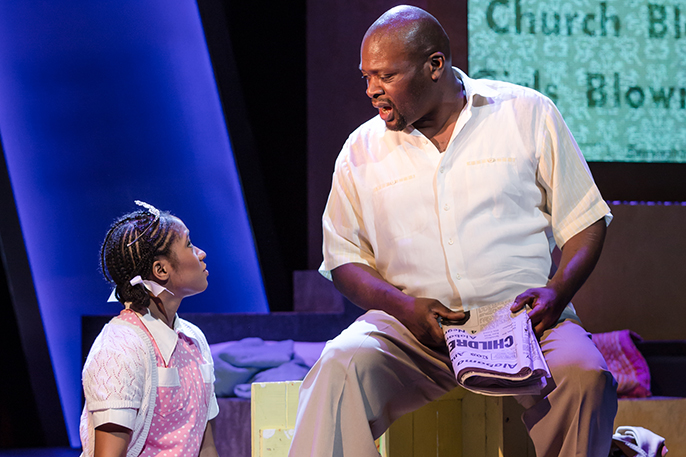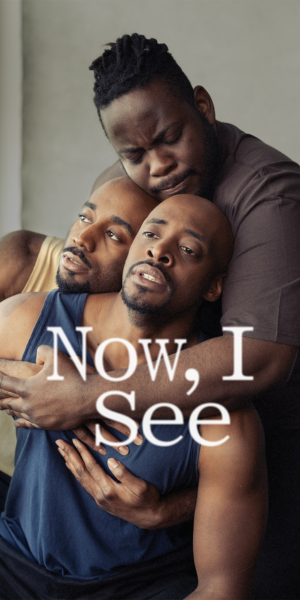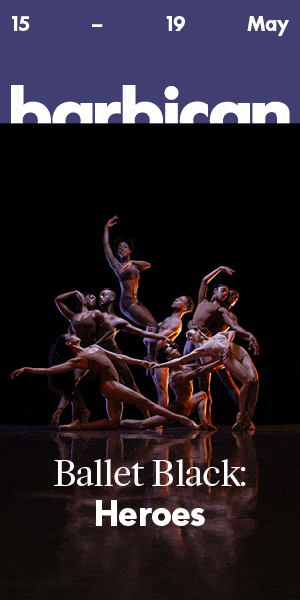This musical charts the progress of a young girl in Los Angeles in 1963; although christened ‘Vivica Stanton’, she calls herself “Bubbly”. Her infectious smile/positive demeanour is her constant travel companion as she navigates the uncertain terrain of 1960’s America. So far, so ‘Hairspray’…
So, what sets this apart? Well, let’s pretend the title isn’t a complete give-away. ‘Bubbly’ is – spoiler alert – both African-American (‘colored’), and a female. Yes, a black female is the central character in her own musical! No sub-plots, no side-kicks, no significant others, and no apologies. Hats off to sole writer, Kirsten Childs.
And it starts – and it’s just… fine.
Act one’s highlight arrives early: Young Vivica’s interaction(s) with her white doll – and subsequent repudiation of its black counterpart – (“Sweet Chitty Chatty”) is a double-edged delight.
Elsewhere, we see her go through various rites of passage: her first pre-pubescent boyfriend, her first encounter with the mythical ‘glass ceiling’ (as she gets passed over for a lighter girl in the children’s ballet class she attends); her first encounter with racial profiling-by-cop; an ‘oh-so-cool’, Afro-centric, white, hippie, high school boyfriend; her first ‘conscious’ black (sistah-girl) friend. Indeed, as we make our way through to 1970’s New York, we have safely visited all the familiar ‘growing-up-black-in-the- ‘60s’ tropes. Despite Karis Jack’s spirited turn as Young Vivica/Bubbly, the first act just doesn’t engage nearly enough.
And then, the second act picks up considerably, and has many more stand-out moments. For example, the physical comedy in both the ‘Secretarial Pool’ and the ‘Dance school’ sequences are a joy, as is the bitter-sweet relationship counseling given in ‘Granny’s advice’. But it’s in the pivotal ‘Director Bob’/audition section that the musical’s mix of uncomfortable humour and satire comes into its own; the sequence is both laugh-out-loud funny and – as ‘Bubbly’ shakes her head in disgust at Older Vivica’s shucking and jiving routine – movingly poignant.
The play ends rather abruptly in 1990, as both Vivica and Bubbly – having reconciled their selves – walk her/their older childhood sweetheart (‘Gregory’) down memory lane. So – as Vivica/Bubby finally reveals herself as a self-actualised, successful New Yorker – this ‘tale of two halves’ yields a winning result.
It would be nice if this musical had come with a more hummable set of tunes. As good as both Kirsten Childs’ material – and Jordan Li-Smith’s musical direction – are, the lack of a melody/motif that one can take home is unfortunate. Still, the music is multi-faceted and engaging so – I’m sure – repeat viewings, would reveal more.
The set – although clever in its intermittent use of narrative and pictorial projection – seems somewhat cumbersome in places; as if the performers were navigating an obstacle course. That having been said – the set, lighting, staging, and sound all work well enough together in support of the story.
The performances and vocals are good, most notably Sophia Mackay (‘Older Vivica’), Sharon Wattis (‘Mommy’), and Shelley Williams (‘Granny’). Mykal Rand’s choreography is fun and, although I found the production’s tone a tad broad at times, director Josette Bushell-Mingo manages to extract the right amount of pathos by the end.
I’m sure any ‘person of colour’ who has danced ‘the dance of The West’ will identify with many aspects of this musical’s story: the idea of filtering out in order to ‘fit in’; the concept of picking one’s battles after hearing yet another ‘unintentionally patronising’ remark; the juxtaposition of having to lead ‘Dear white people’ through the dreaded ‘race maze’ whilst, constantly having any discourse mapped-out – and pathways reframed – by said white Patriarchy; convincing others that one is not angry whilst, simultaneously, willing oneself not to get angry; facilitating the comfort of others, while striving to normalise and rationalise one’s own lack of social – or even physical – safety.
It’s all here. You just need to be patient… and bubbly.

























